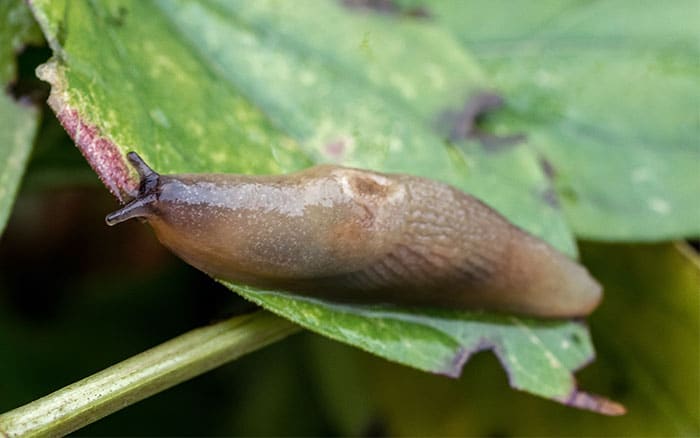Slugs and snails are probably the UK’s number one pest!
There are many different types of both species living in our gardens. However, they tend to hide during the day in dark, shady places and come out at night to feed.
What are slugs and snails?
Slugs and snails are officially classified as gastropods, which is a type of mollusc. They have no backbone and are covered with mucus which stops them from drying out.
Whilst a few species of both feed on garden plants, the majority prefer to eat rotting material found in compost!
How to spot slugs and snails
There are several signs including the instantly recognisable slimy, silvery trail!
Additionally, other telltale signs are ragged holes in the leaves of plants. Stems of young plants can be completely bitten through. And in really bad cases all the soft leaves are eaten leaving just the tough leaf veins!
What plants are affected?
A huge range of plants are affected but seedlings and soft-leafed plants are particular targets. Also, they can munch on tulip bulbs and potato tubers too!



How to control slugs and snails
Sadly, there is no one quick control fix for either slugs or snails. Therefore, it’s much better to use a variety of wildlife-friendly pest control, so try a mix of the following:
- Firstly, start a compost pile. This will attract slugs and snails who do an excellent job with compost. Then, they can break down the stems placed on the pile.
- Also, patrol the garden at night with a torch to find slugs and snails and place them on your compost pile!
- It seems that slugs and snails are not keen on copper so surrounding the top of pots with copper tape. This is widely available from Garden Centres and Plant Nurseries. Plus, place sections on the plant stems, as this may help deter them.


- Let wildlife help you keep slugs and snails under control by making your garden more wildlife-friendly. Leave sections of grass longer at certain points of the garden. Bury an old washing-up bowl or other container, with stones placed in the bottom. Add a piece of wood leaning inside the water to allow wildlife that may have fallen in to escape. Having a water source in your garden is the one big thing that will attract slug and snail-eating creatures.
- Try surrounding newly grown plants with a circle of sacrificial seedlings such as lettuce that slugs and snails particularly like. The idea is to get your prized plant to the stage where leaves and stems have toughened up. Finally, they should get to the point where they’re too tough to be of interest to these pests.
- Don’t be tempted to use pellets containing potentially harmful chemicals as these can potentially harm beneficial wildlife.
Need advice?
If you need specialist advice, I recommend you get in touch with your local garden centre or plant nursery.

Leave A Comment